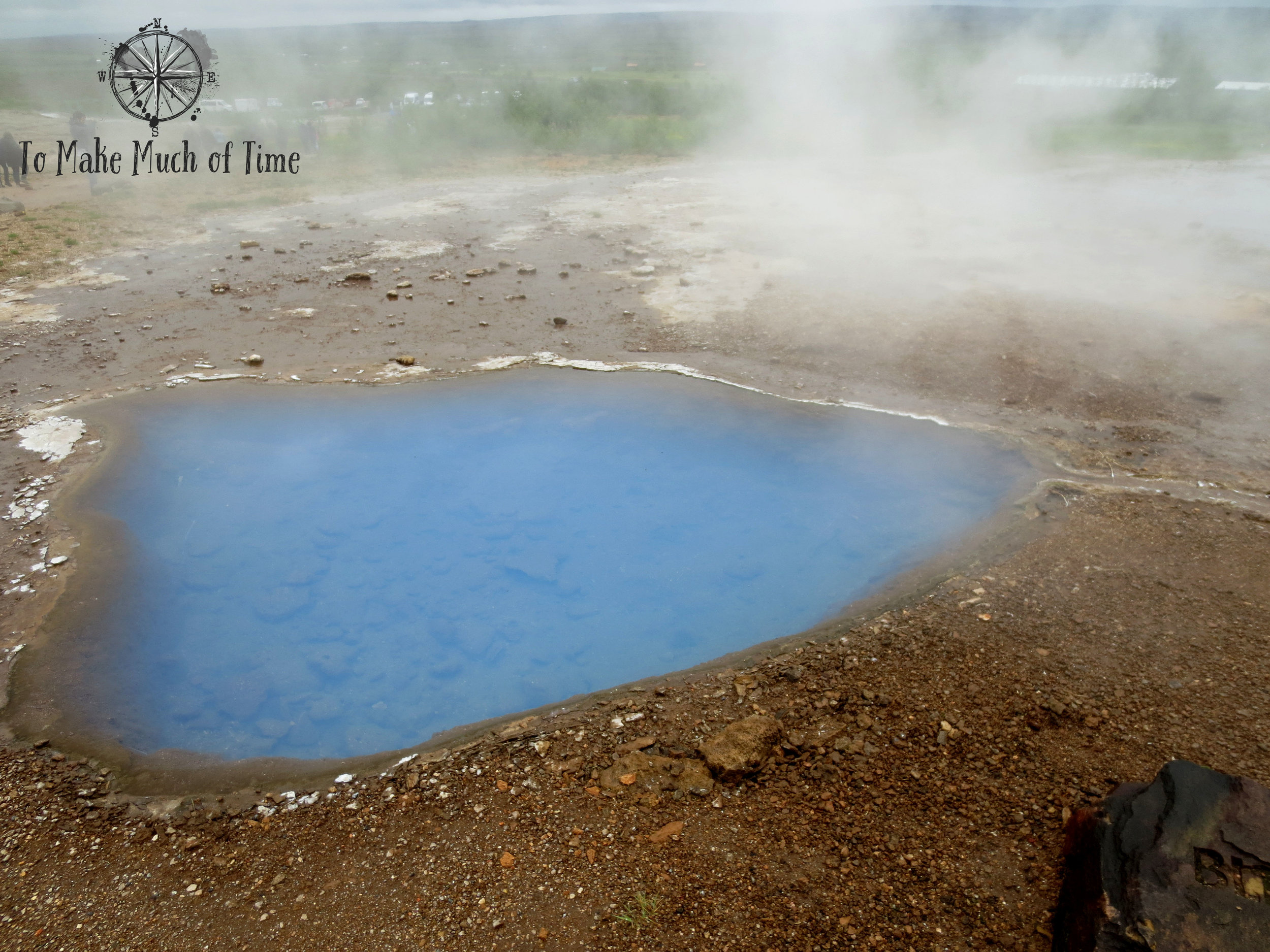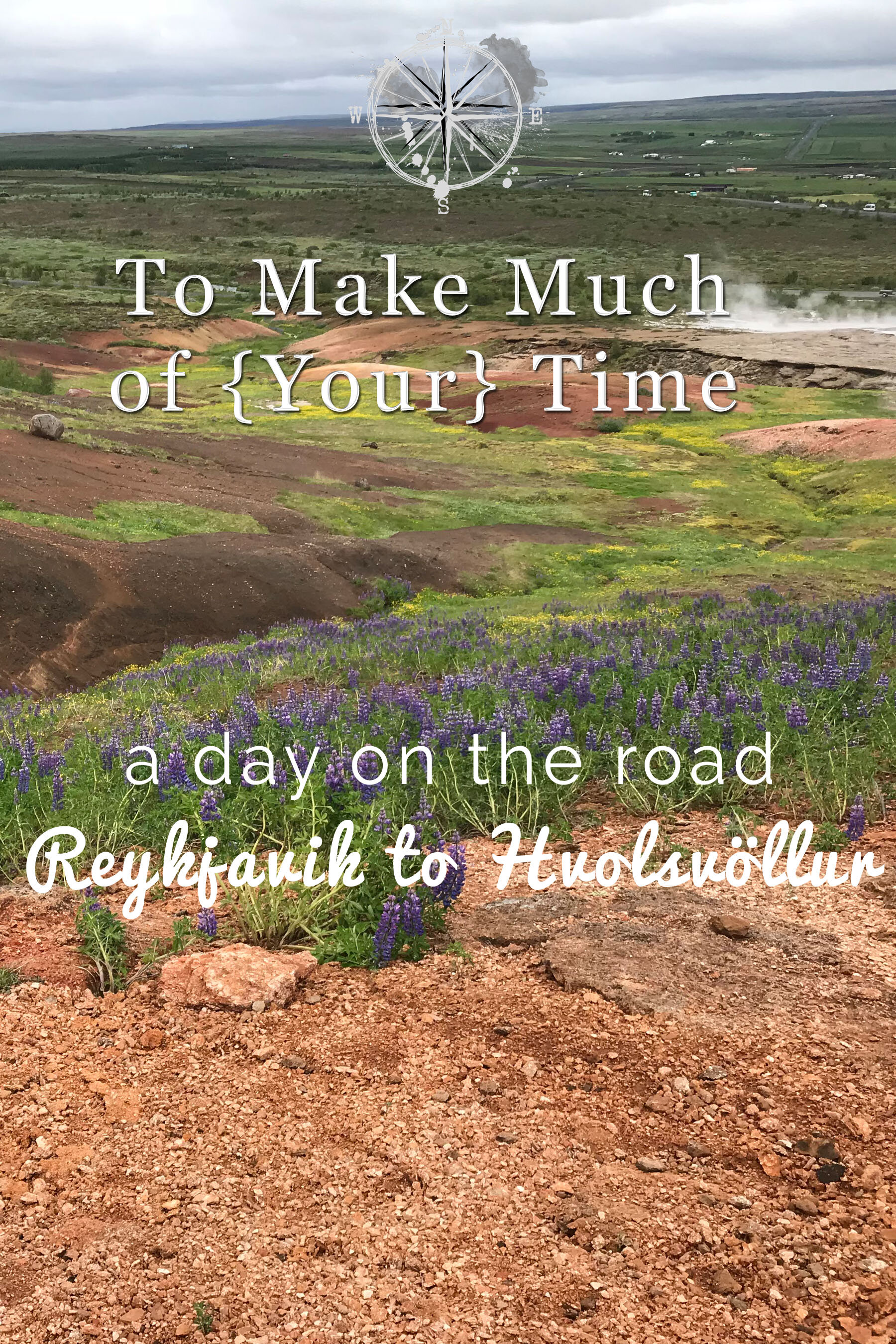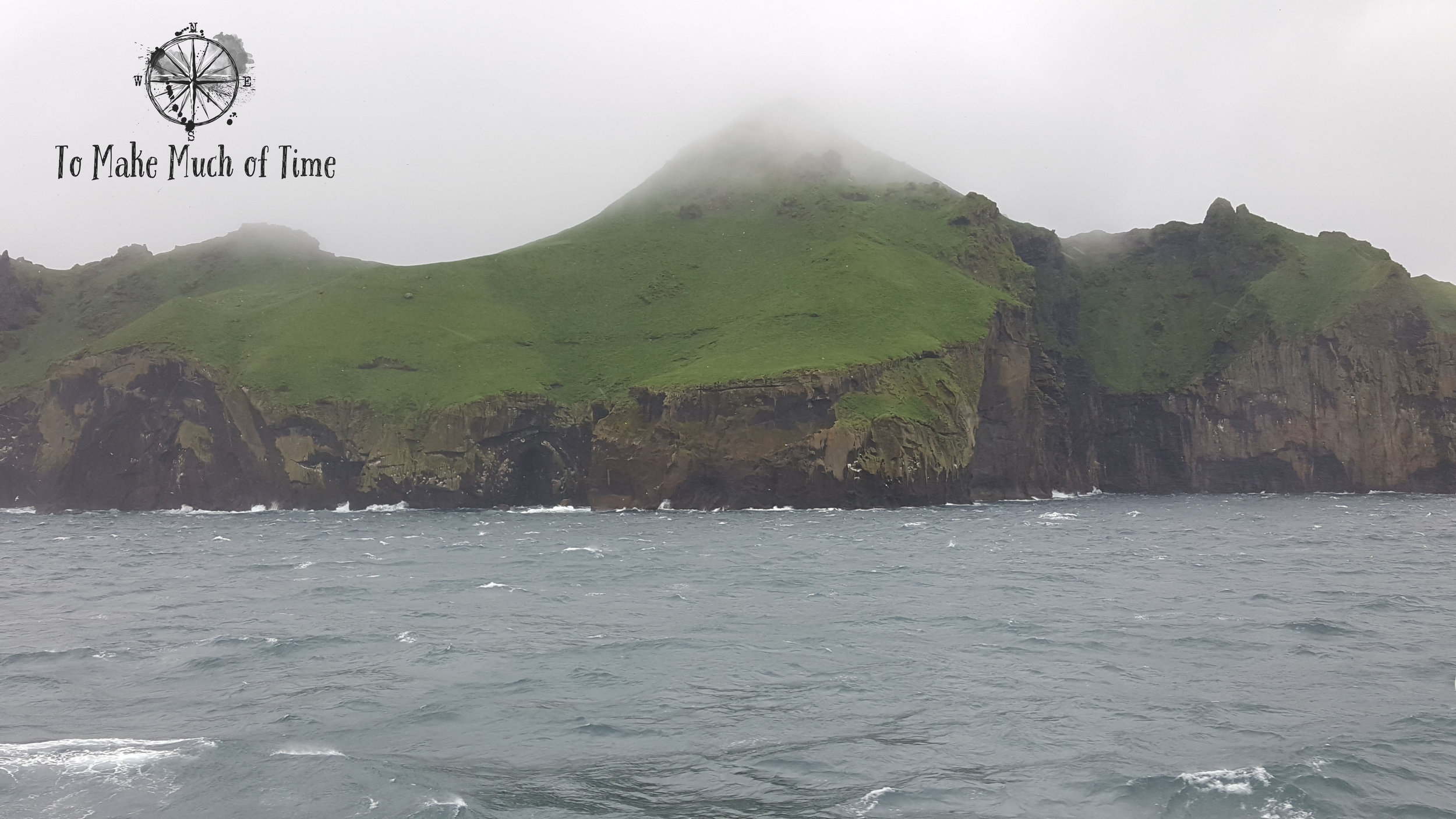Iceland's Ring Road - Reykjavik to Hvolsvöllur (Day 2)
Geysir, a geothermal geyser in the Haukadalur Valley area of Iceland. In case you were wondering, yes this is where the term geyser came from.
UPDATED: 1/16/2023
Note: Some links throughout our site are affiliate links, which means we may receive a small commission at no cost to you.
From Reykjavik we headed toward our first destination of the day, Þingvellir National Park . The most densely packed tourist spots on our trip were during this day. While we didn’t complete the so-called Golden Circle just outside of Reykjavik (ours was more of a Golden Half-Circle), the stops along the way are very popular for individuals and tour buses taking day trips from Reykjavik. Getting photos without inadvertent photo bombers ranged from quite tricky to entirely impossible.
After a 45 minute drive outside of the city, we arrived at the Þingvellir National Park visitor’s center. The building is perched on a hill overlooking the valley on one side and on the other abuts the spectacular sight where the two tectonic plates part ways. We looked at a few maps and opted for the obvious choice: to walk down the pathway through the plates on the Öxarárfoss Waterfall Trail. We meandered a bit but generally stuck to that trail, which was about 2.6 miles in length.
Walking down the path, it was evident that the area is very active geologically. The two tectonic plates (Eurasian and North American) are actively drifting apart at about an inch a year, and the space between them is subsiding. For more on the geology of Iceland, check out our blog dedicated to that fascinating topic (coming soon).
Volcanic rock outcroppings at Þingvellir National Park
Lake Þingvallavatn (Thingvallavatn), a rift valley lake
One of the few divergent plate boundaries found on land
That’s the prime minister’s summer house in the distance.
Þingvallakirkja (Þingvellir church)
After descending the rift, we came upon the original site of the word’s first parliament, Þing, which began in 930 and sits on a rocky overlook known as Lögberg , or Law Rock, above the river Öxará.
If you’re interested in more on the history, the park’s website has much more detailed information here. Down the trail and across the river, a much more modern assembly house sits in the beautiful setting. Þingvallakirkja (Þingvellir church) which stands there today was built in 1859 but represents a whole history of Christianity juxtaposed with the non-Christian factions. There is historic evidence of prior churches in the vicinity dating back to around 1000. Next to the church is the Icelandic National Cemetery and a 5-gabled building that is the summerhouse of the prime minister.
Volcanic rock is everywhere!
Imagine how the early settlers of this valley must have felt when the first Geysers erupted in 1294.
The drive to Geysir was about an hour and the area was jam-packed with cars and tour buses. If fanny packs could walk, this would be prime territory for them. But. There are not that many places where you can see multiple, active geysers shooting steaming water and steam from the ground. If you think the naming of this geyser as Geysir was particularly unoriginal, as I initially did, you’ll be happy to learn that all other geysers in the world were named after this one.
The ground and geothermal pools reflected colors we would see again in Iceland that represent the active geology in the area and are not what we are used to seeing in nature. There were a lot of signs warning of the scalding water, areas roped off, and, as you might expect, people ignoring all of it. This is one of the things that drives us nuts when traveling. Even if you are care-free about your own existence, nature is fragile and easily harmed! Stay on the paths and don’t destroy the places you visit so others can enjoy the same sights!
We had never seen a geyser before. Trying to take a photo of one erupting feels like the start of a race, constantly tensing your muscles, ready to go, and always relaxing them just as the race horn goes off. And either way, the geysers are surrounded by people in a rainbow cacophony of coats and clothes, so plan on going to enjoy the experience viscerally, not pixel-y.
The northern overflow pool of the geyser Blesi
The southern pool of the geyser Blesi
Runoff from the Konungshver geyser.
Hot water everywhere! Near the top of the image is Strokkur, the most active geyser when we visited.
If waterfalls are your krypotonite, Iceland will be your destruction. Leaving behind water shooting up in the air for its polar opposite, we headed next to Gullfoss, a short 10-minute drive (it is worth noting that “foss” in Icelandic means “waterfall”). Fed by a glacier, the Hvítá (“white”) river turns into Gullfoss (“Golden Waterfall”), as it drops into a deep crevice, over 200 feet in depth (about the height of a 20 story building). After you park your vehicle, the approach to the waterfall enhances the experience. You start off with a view of it in the distance and then follow a path alongside it which arcs right next to the deep crevice of the waterfall.
A path lets you walk along the falls to see it from many angles.
The thunderous sound, the cold misty spray; an assault on the senses.
The sheer drops along the riverbank might be dizzying to some.
Next, we headed towards Stöng (about an hour from Gulfoss) and passed a sign for Hjálparfoss, a very uniquely u-shaped waterfall. The walk down to view the falls was very short, and no one else was there. We spotted a T-Rex hiding in the rocks. Do you see him? (Hint: his head is aimed towards the sky on the left side of the falls.)
Columnar Jointing (the roughly hexagonal columns) is seen on nearly every rock around this waterfall indicating the volcanic history of the region.
After this diversion, we arrived at Stöng to check out the ruins of an early Viking settlement. Nestled in the verdant valley of Þjórsárdalur, Vikings created a couple dozen settlements during the so-called Settlement Era. In the year 1104, the volcano Hekla erupted over the valley, making a name for itself in Europe as a Gateway to Hell (held as a literal belief by many at the time). But more locally, Viking settlements were buried, and in 1939, archaeologists uncovered some and used the ruins of one to later reconstruct the building with visible interior spaces that had been covered under ash for over 800 years. By the time we visited Stöng, we had left the hoards behind. No one else was there, so we could wander and explore by ourselves, and the traffic on the roads had diminished to a trickle as we set our sights on our stop for the night, Hvolsvöllur, a bit more than an hour away.
Over the course of the day, we drove 4+ hours and found the landscape changing and unfolding as we went - one color palette and then around the bend a completely new one as we moved between streams, waterfalls, mesas, buttes, jagged mountains, and lakes.
We checked in at our Airbnb accommodations, about a 20 minute drive southeast from the town (more on our accommodations here), and then headed back into town for dinner. After peanut butter and jelly sandwiches in the car at Geysir, we were ready for a more substantial meal and ate at Eldstó Art Cafe/Restaurant and besides, the grocery store was already closed (more on eating in Iceland here).
More alert than the prior night, we were really able to notice the lack of darkness. And strangely, it didn’t seem as odd as I thought it would except not being able to use the amount of light as an indicator of bedtime. At 12:30am, the light had dimmed into a sort of perpetual twilight for the small sliver of time before it would be sunrise. But with a lot of cloud cover, we rarely saw any indication of the sunset or sunrise in Iceland. I was able to sit in bed writing in my journal with no interior lights, simply a window allowing the soft, diffused light in.
Join us on the next leg of our journey here!
Click the image below to save this post to Pinterest!
Check out our other posts on Iceland:
Hvolsvöllur and Heimaey Island
Continue on our adventure as we headed off-shore to the island of Heimaey…





















